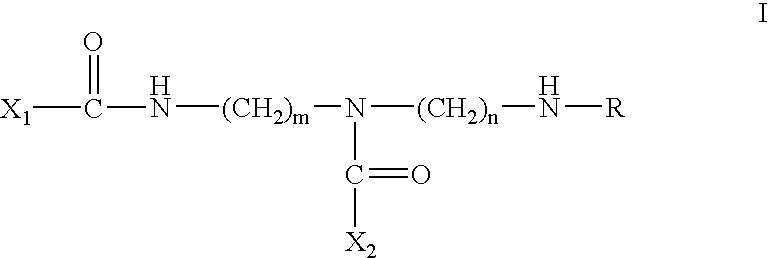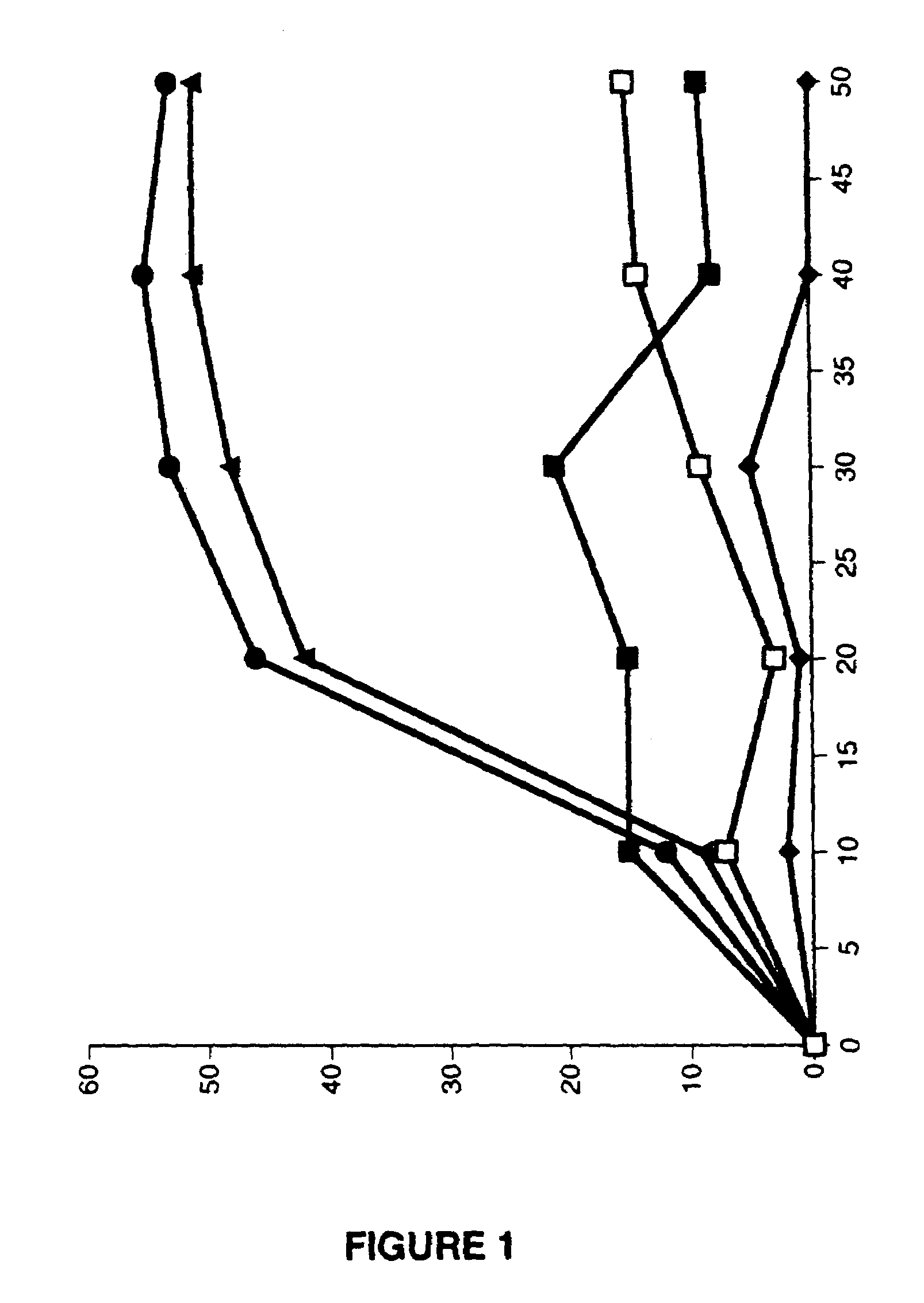Calpain inhibitors and their applications
a technology of calpain and inhibitors, applied in the direction of viruses/bacteriophages, peptide/protein ingredients, dsdna viruses, etc., can solve the problems of potential safety concerns of individuals undergoing treatment, and achieve the effects of enhancing the transciption of a therapeutic transgene, enhancing the infectivity of a cell, and enhancing the apoptosis of p53
- Summary
- Abstract
- Description
- Claims
- Application Information
AI Technical Summary
Benefits of technology
Problems solved by technology
Method used
Image
Examples
example 1
Construction of Viral Vectors
[0095]A viral vector backbone was created based on a human adenovirus type 5 genome comprising deletions of the E1a and E1b and protein IX gene functions and partial deletion of the E3 coding region. Specifically, the deletions of base pairs 355 to 3325 was used to eliminate E1a and E1b functions, deletion of base pairs 3325 to 4021 was used to eliminate protein IX function and deletions of 28592 to 30470 were used to eliminate E3 functions. See Wills, et al. (1994) Human Gene Therapy 5:1079–1088. The DNA sequence encoding the cytomegalovirus immediate early promoter without the presence of the CMV promoter intron was inserted into the rAd viral genome. This vector without an exogenouse transgene was used as control vector and was designated ZZCB. The wildtype p53 coding sequence was inserted into this vector backbone so as to achieve expression of the p53 sequence under control of the CMV promoter. This vector was denoted ACN53 and is also referred to i...
example 2
Culture of Tumor Cell Lines
[0096]Hep 3B 2.1–7 cells were obtained from the American Type Culture Collection, Peoria, Ill. under accession number ATCC # HB 8064). NCI-H596 cells were obtained from the American Type Culture Collection, Peoria, Ill. under accession number ATCC # HTB 178). NCI—H596 cells were grown in Ham's F-12 DMEM (commercially available from Irvine Scientific) supplemented with sodium pyruvate and 10% fetal bovine serum. HLF cells were obtained from the Japanese Cancer Research Resource Bank, National Institute of Health, Tokyo, Japan). SK-Hep1 cells were obtained from the American Type Culture Collection, Peoria, Ill. under accession number ATCC #HTB 52). RKO cells were obtained from M. Brattain, Medical College Hospital, Toledo, Ohio. DLD-1 cells were obtained from the American Type Culture Collection, Peoria, Ill. under accession number ATCC # CCL 221). Hep 3B 2.1–7 cells were obtained from the American Type Culture Collection, Peoria, Ill. under accession number...
example 3
Apoptotic Effect Of Virus and / or CI-1 on Tumor Cells
[0097]An aliquot containing approximately 1×106 cells of each type was placed in a T-225 flask. The effect of varying concentrations of rAd-p53 (from 1×107 to 2×109ACN53 particles / ml of solution) was investigated in combination with CI-1 in a range of 5–20 μM. In each instance, the cell line was infected with 1×107–1×109 particles / ml of cell culture with the ACN53 using the empty cassette virus (ZZCB) as a control. In each instance, the cells were exposed to the virus for a period of one hour. At the end of this time, the virus was washed off the from the cells and fresh media containing an appropriate concentration of CI-1 was added.
[0098]HLF cells were infected at increasing log concentrations of rAd-p53 ranging from 1×105 to 1×109 for one hour at which time virus was washed off and replaced with fresh media (viral infection with no treatment) or with 10 μM calpain inhibitor 1. Cells were assayed for apoptosis by annexin V-FITC s...
PUM
| Property | Measurement | Unit |
|---|---|---|
| Temperature | aaaaa | aaaaa |
| Volume | aaaaa | aaaaa |
| Volume | aaaaa | aaaaa |
Abstract
Description
Claims
Application Information
 Login to View More
Login to View More - R&D
- Intellectual Property
- Life Sciences
- Materials
- Tech Scout
- Unparalleled Data Quality
- Higher Quality Content
- 60% Fewer Hallucinations
Browse by: Latest US Patents, China's latest patents, Technical Efficacy Thesaurus, Application Domain, Technology Topic, Popular Technical Reports.
© 2025 PatSnap. All rights reserved.Legal|Privacy policy|Modern Slavery Act Transparency Statement|Sitemap|About US| Contact US: help@patsnap.com



